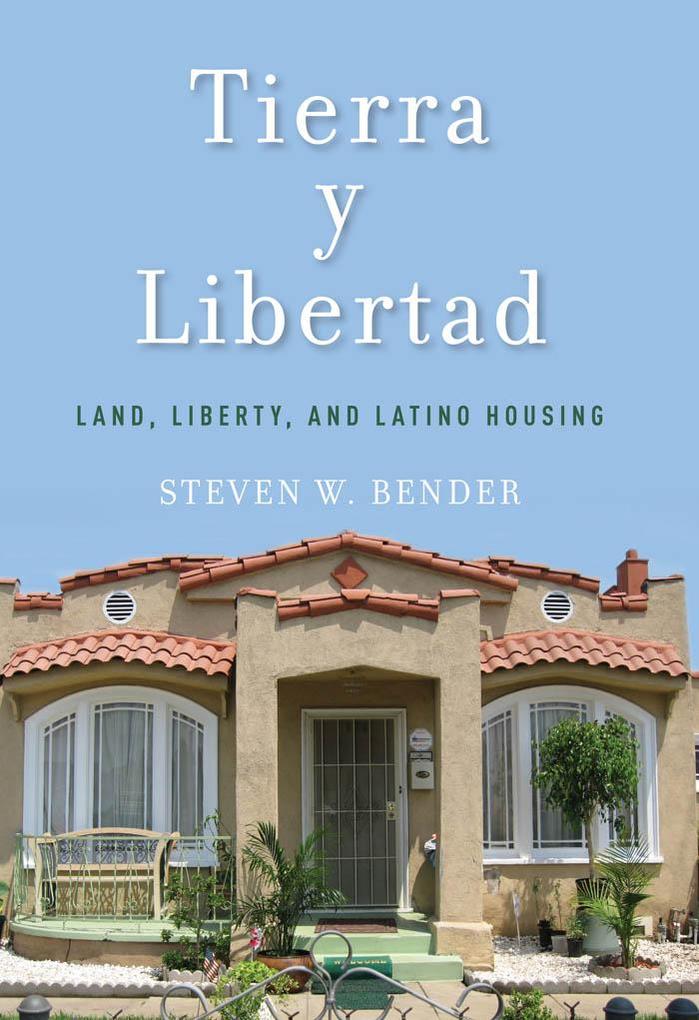
Zustellung: Do, 19.06. - Mi, 25.06.
Versand in 2 Wochen
VersandkostenfreiBestellen & in Filiale abholen:
One of the quintessential goals of the American Dream is to own land and a home, a place to raise one's family and prove one's prosperity. Particularly for immigrant families, home ownership is a way to assimilate into American culture and community. However, Latinos, who make up the country's largest minority population, have largely been unable to gain this level of inclusion. Instead, they are forced to cling to the fringes of property rights and ownership through overcrowded rentals, transitory living arrangements, and, at best, home acquisitions through subprime lenders.
In Tierra y Libertad, Steven W. Bender traces the history of Latinos' struggle for adequate housing opportunities, from the nineteenth century to today's anti-immigrant policies and national mortgage crisis. Spanning southwest to northeast, rural to urban, Bender analyzes the legal hurdles that prevent better housing opportunities and offers ways to approach sweeping legal reform. Tierra y Libertad combines historical, cultural, legal, and personal perspectives to document the Latino community's ongoing struggle to make America home.
In Tierra y Libertad, Steven W. Bender traces the history of Latinos' struggle for adequate housing opportunities, from the nineteenth century to today's anti-immigrant policies and national mortgage crisis. Spanning southwest to northeast, rural to urban, Bender analyzes the legal hurdles that prevent better housing opportunities and offers ways to approach sweeping legal reform. Tierra y Libertad combines historical, cultural, legal, and personal perspectives to document the Latino community's ongoing struggle to make America home.
Inhaltsverzeichnis
Contents; Acknowledgments vi; Introduction 1; Part I Loss; 1 Loss and Lettuce: The Cesar Chavez Legacy 16; 2 Southwest Ranchos: Land Grants and Land Loss 21; 3 Fields of Dreams: Farm Worker Housing 36; 4 Loss in the Tortilla Flats 46; 5 Lenders and Loss: The Destructive Legacy of Subprime Mortgages in Latino/a Communities 55; Part II Exclusion; 6 Exclusion of Undocumented Immigrants 75; 7 Exclusion by Public Law: Zoning Laws 95; 8 Exclusion by Private Law: Restrictive Covenants 112; Part III Geographic Examples of Loss and Exclusion; 9 Born in East L.A.: The Legacy of Loss and Exclusion in Southern California 126; 10 Little Havana 139; 11 Spanish Harlem 145; Part IV Reclamation and Reform; 12 Tierra y Libertad: Reclaiming Individual and Collective Space 154; 13 Policy Considerations in Formulating Housing Reform 182; 14 Lowering the Cost of Housing and Credit 202; 15 Equity for Latino/as and the Poor 229; Conclusion; Notes; Index; About the Author
Produktdetails
Erscheinungsdatum
29. September 2010
Sprache
englisch
Seitenanzahl
252
Autor/Autorin
Steven W Bender
Verlag/Hersteller
Produktart
gebunden
Gewicht
476 g
Größe (L/B/H)
238/153/21 mm
ISBN
9780814791257
Entdecken Sie mehr
Pressestimmen
"Steven Bender's Tierra y Libertad is interesting, his research is great, and the information is long overdue." Dolores Huerta, co-founder of the United Farm Workers
Bewertungen
0 Bewertungen
Es wurden noch keine Bewertungen abgegeben. Schreiben Sie die erste Bewertung zu "Tierra Y Libertad" und helfen Sie damit anderen bei der Kaufentscheidung.








